Profile – J. Semaille: The Art of Reinventing Oneself Through 3D Concrete Printing
An unconventional journey for a man passionate about art and woodworking. Jacques Semaille, founder and manager of Pompes Funèbres Semaille in Onnaing, has taken on a new challenge: creating and producing objects made of wood, granite, and 3D-printed concrete. For this active entrepreneur, retirement is out of the question. Quite the opposite—this business owner from northern France founded J. Semaille Création, driven by his passion for designing objects and furniture of all kinds. Blending creativity with technical challenges, he returns to his roots while staying at the forefront of innovation. A portrait of a company with bold ambitions.
Published on 2 September 2025
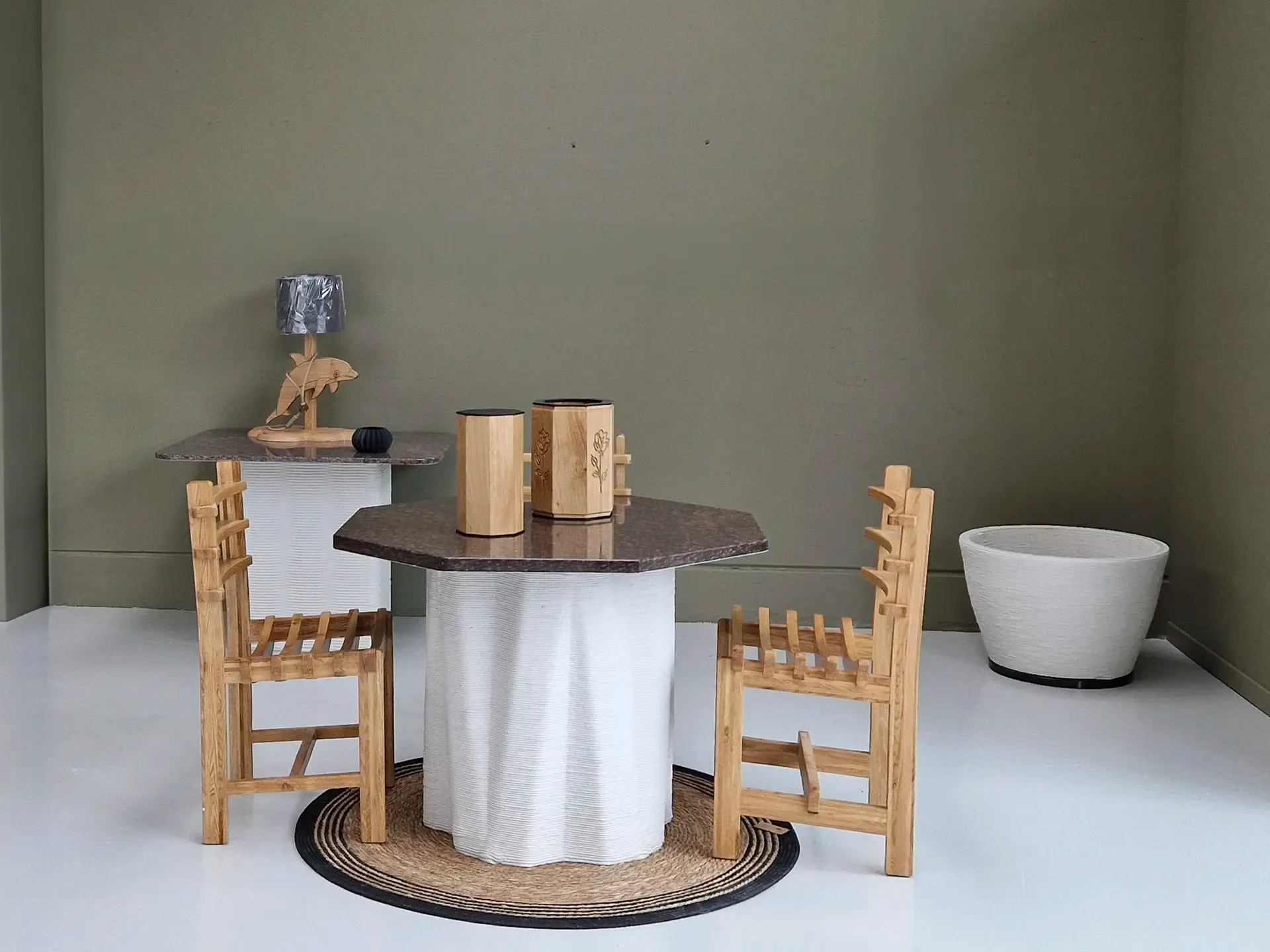
A Discovery and a True Passion for 3D Concrete Printing.
Familiar with CNC machines and eager to explore new forms of craftsmanship, Jacques Semaille discovered Constructions-3D and 3D concrete printing while regularly passing by the Citadel of Know-How.
That’s when the idea of launching a new decorative design business emerged — one that combines woodworking, granite work, and 3D concrete printing.
Always driven by innovation, the collaboration came naturally with the purchase of their first machine.
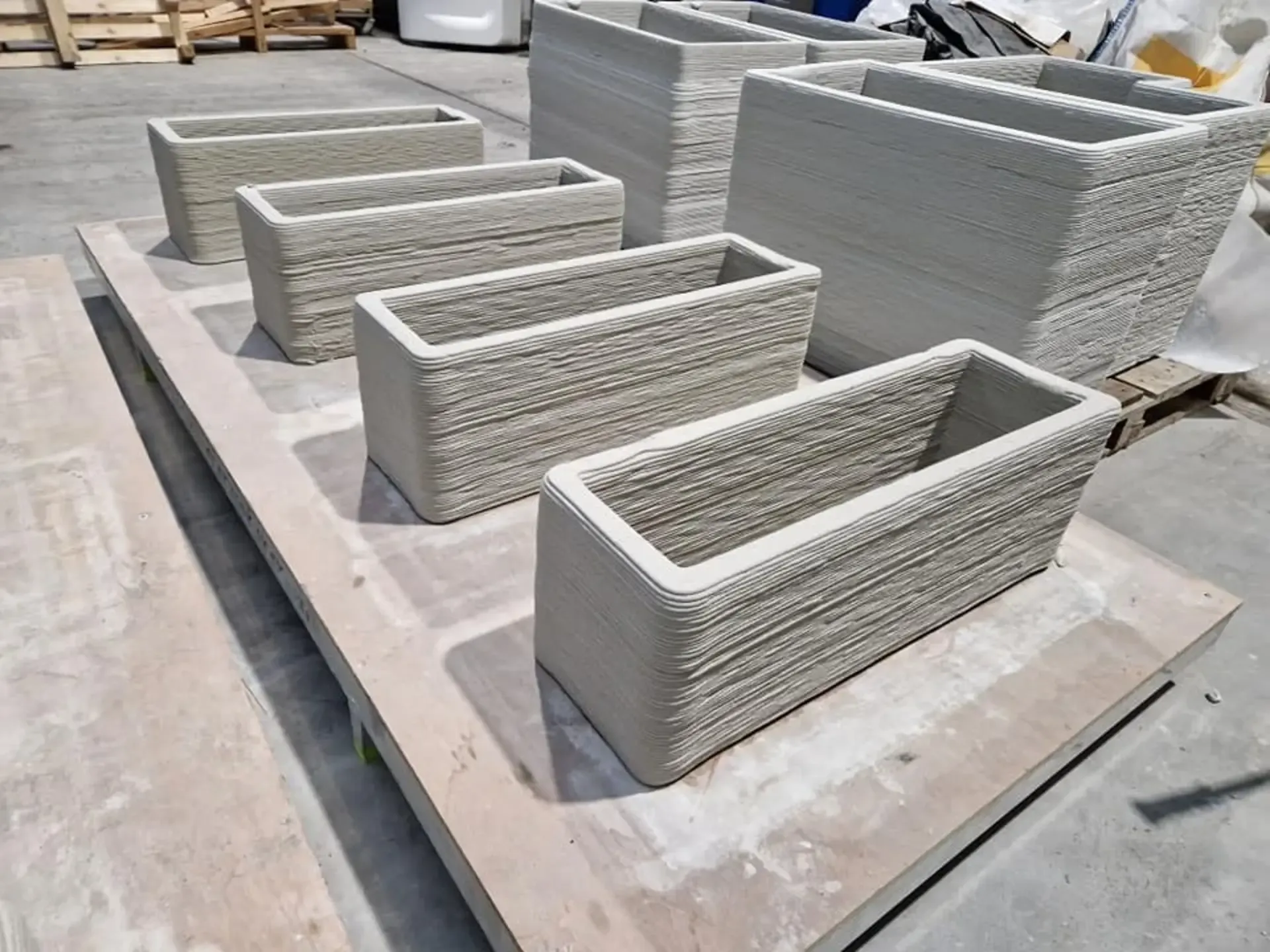
But why choose 3D concrete printing?
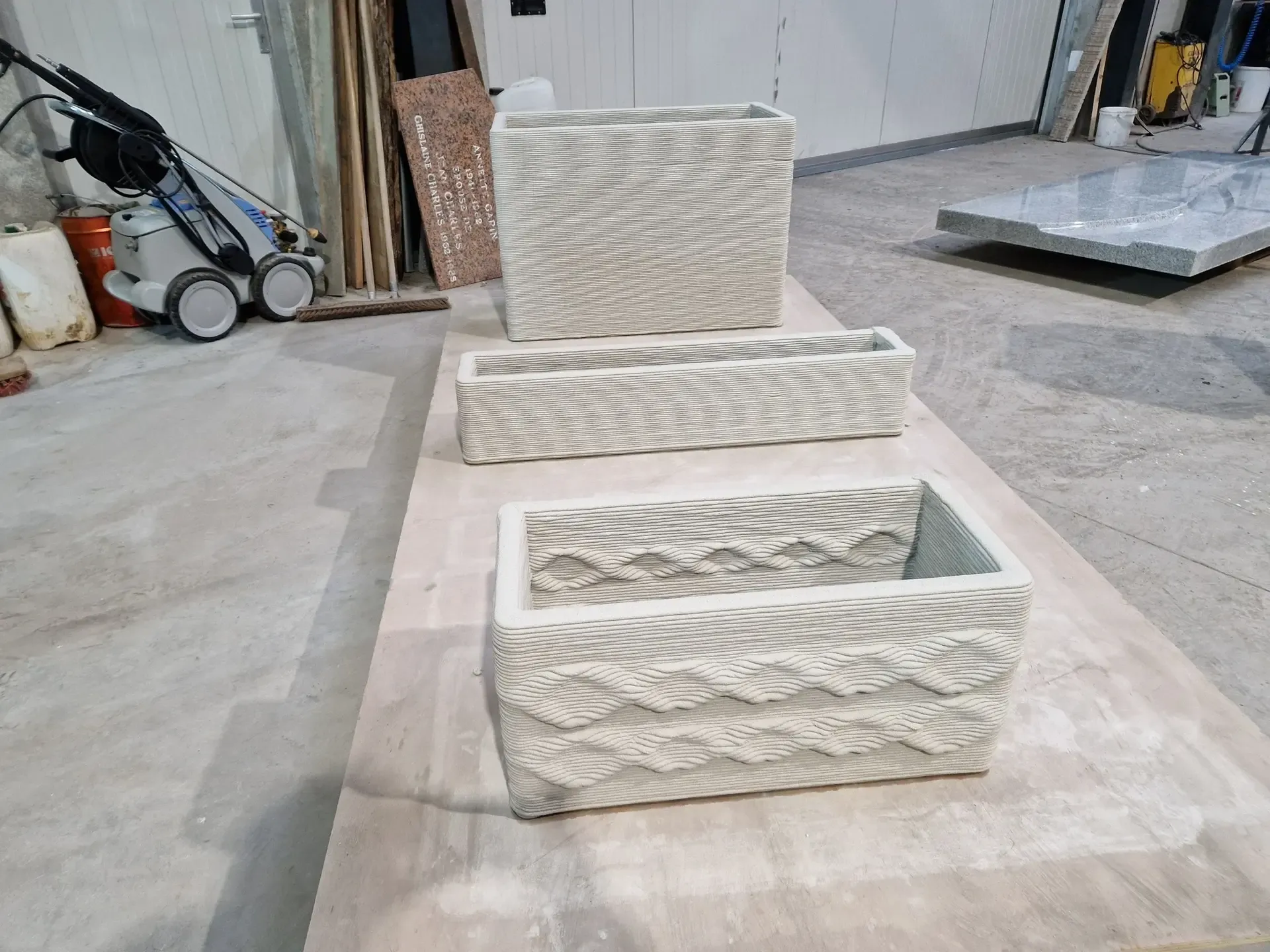
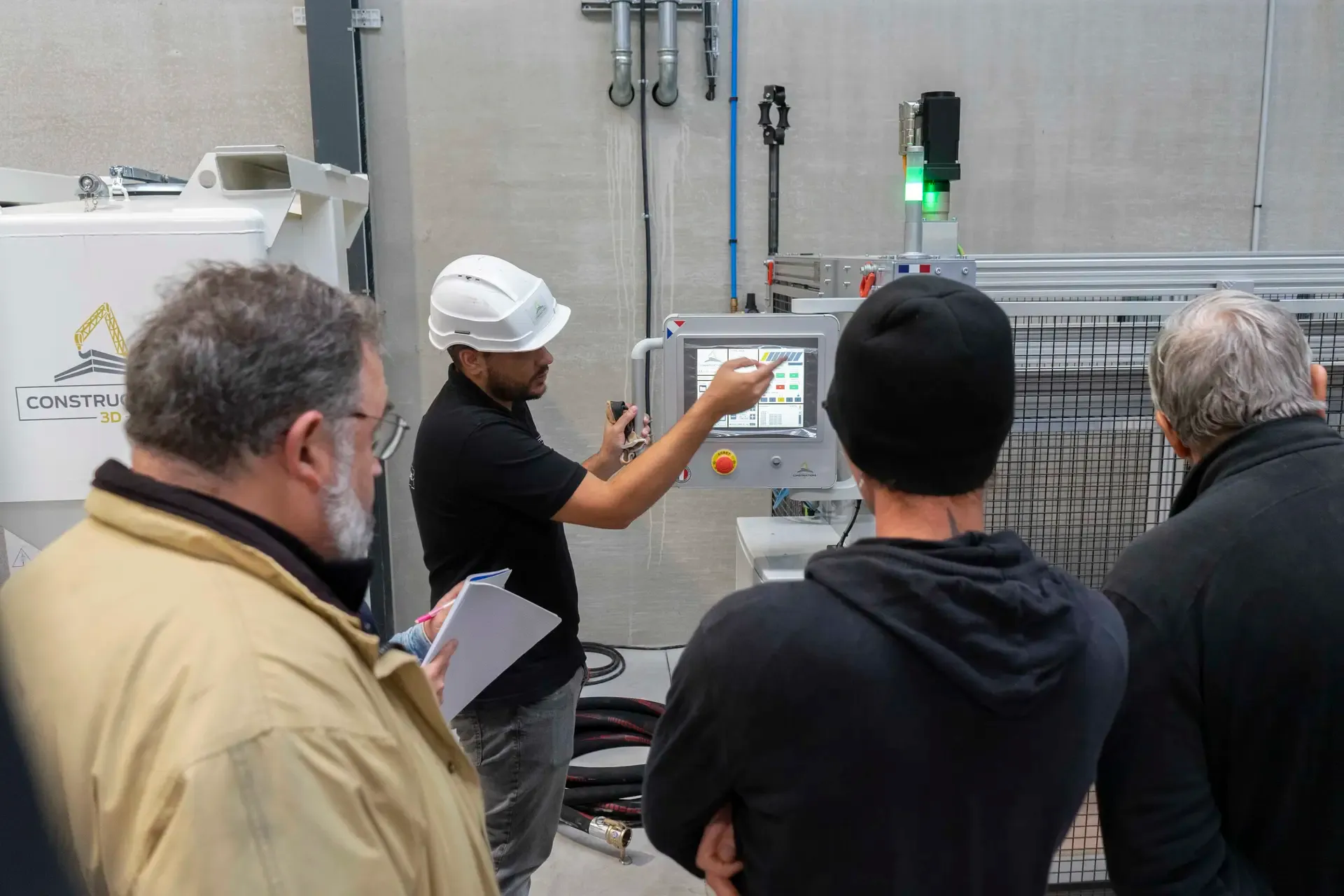
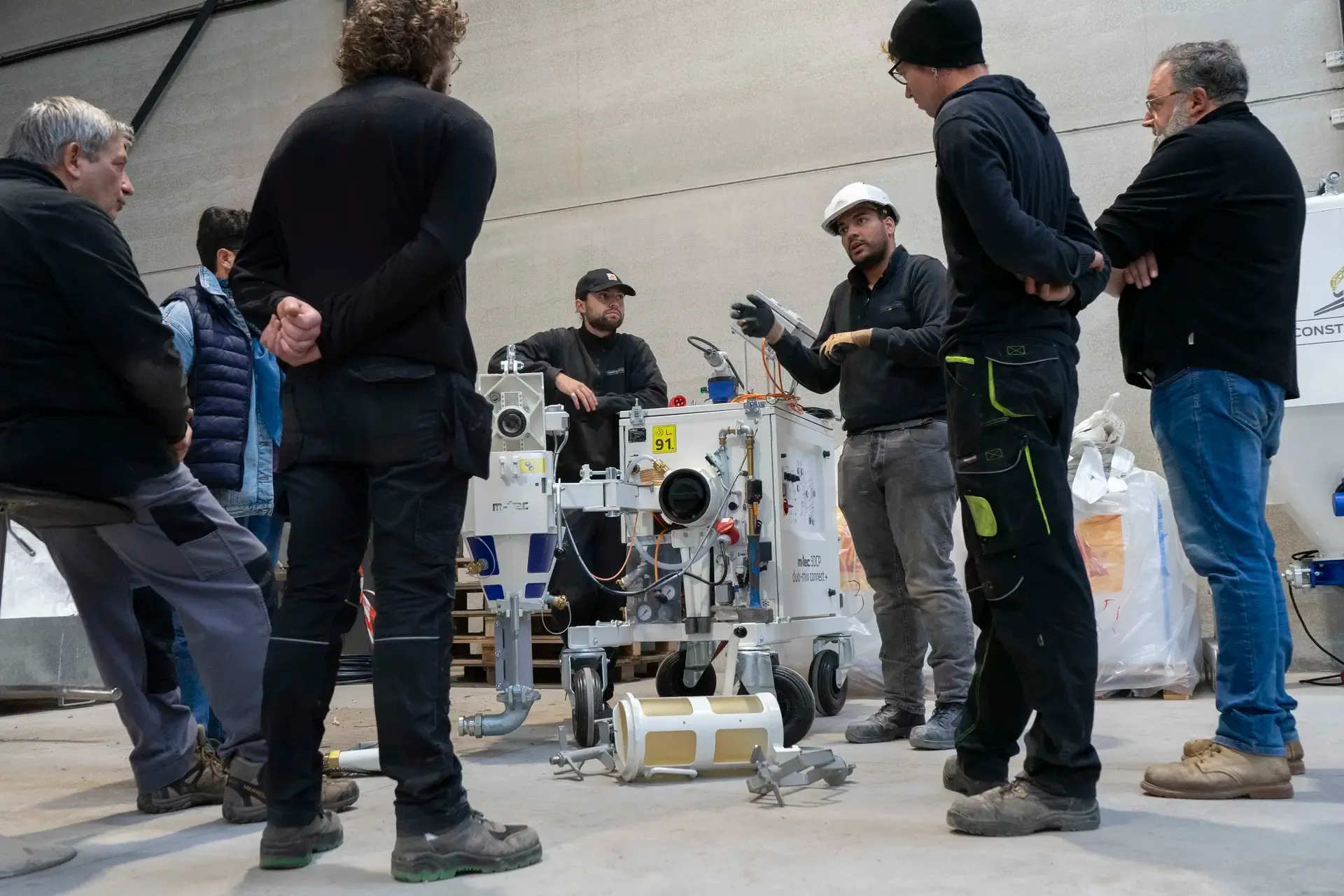
The endless possibilities offered by 3D concrete printing immediately won over Jacques Semaille. The production cost also played an important role in the decision. Less expensive than granite, this technology offers great simplicity in execution. The printed pieces require very little finishing—no polishing, for instance—which significantly reduces production time.
Contrary to popular belief, the process remains highly manual. 3D printing doesn’t automate the entire fabrication process but instead allows for greater efficiency and helps focus on what truly matters: creation.
This project also stems from a desire to stand out and offer clients a unique, tailor-made experience.
The goal is clear for this man of a thousand ideas: to stand out from the rest. Jacques Semaille adds:
“When clients come to us, they see that we’re not an ordinary funeral home. We have real craftsmanship in our field.”
3D concrete printing allows this new interior design company to create genuine added value and enter the market with a truly innovative and disruptive offering.
The J. Semaille team highlights several additional advantages of this technology:
- Easier design process
- Infinite shapes and possibilities
- Custom-made pieces and décor, unlike wood or granite
- High-quality finish
- Unmatched production speed
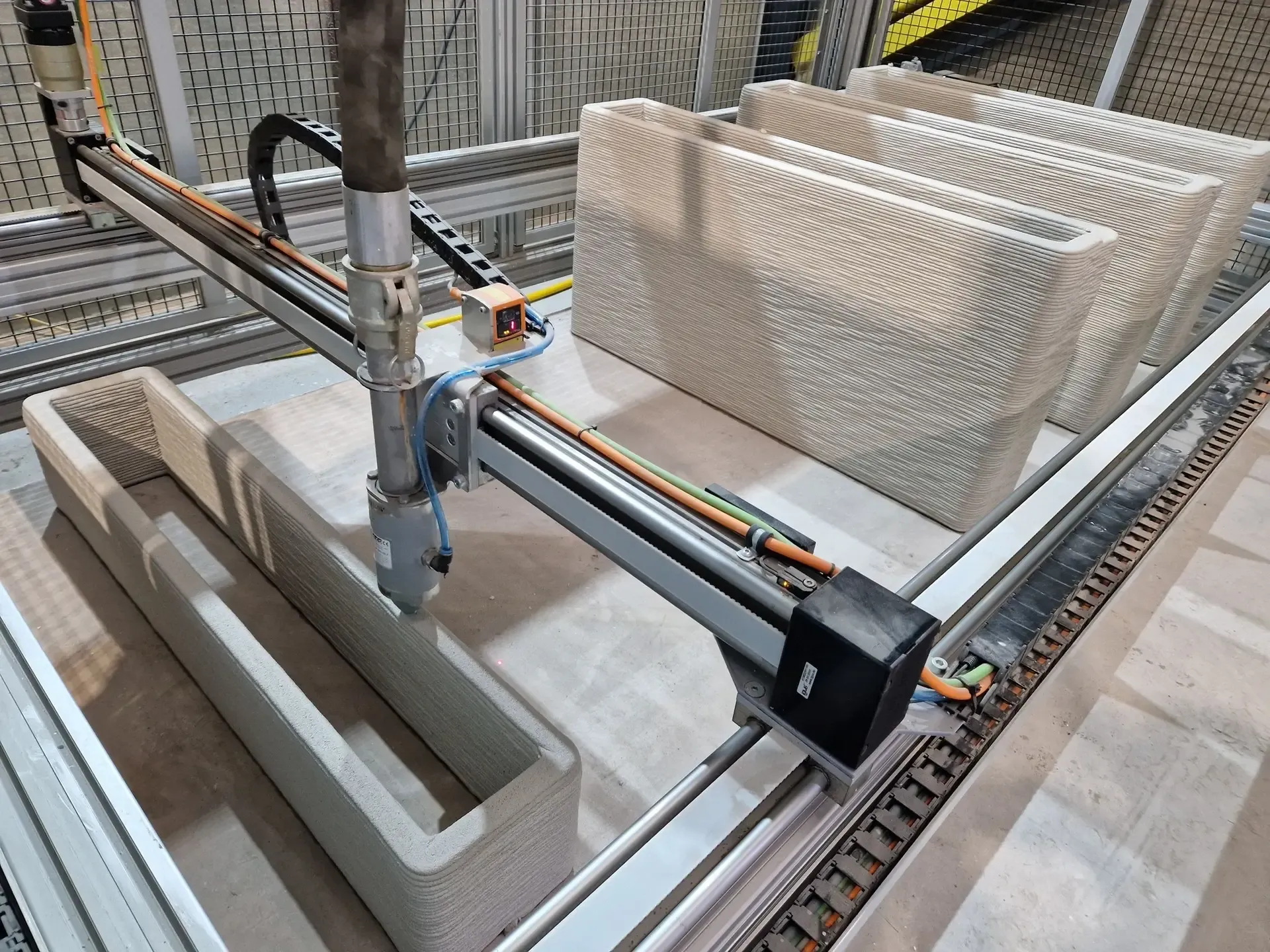
Integration of the MiniPrinter XL: Between Challenges and Innovation A Machine and Material Tailored to the Needs of Interior Design
The machine
It all started with the purchase of a Bambu Lab printer. This 3D printer, bought from Machines-3D, initially allowed the team to produce parts for their funeral service equipment.
But as the founder’s ambitions grew, the company decided to move toward a model better suited to their goals: the MiniPrinter XL. Smaller than standard large-scale concrete printers used in construction, affordable, and easy to operate, it’s the perfect model for a decorative design workshop.
Jean-François, a team member at J. Semaille Créations and an experienced 3D printing enthusiast, also joined the adventure. Despite never having worked with a concrete 3D printer before, he now designs, models, programs, and configures all of J. Semaille Créations’ pieces.
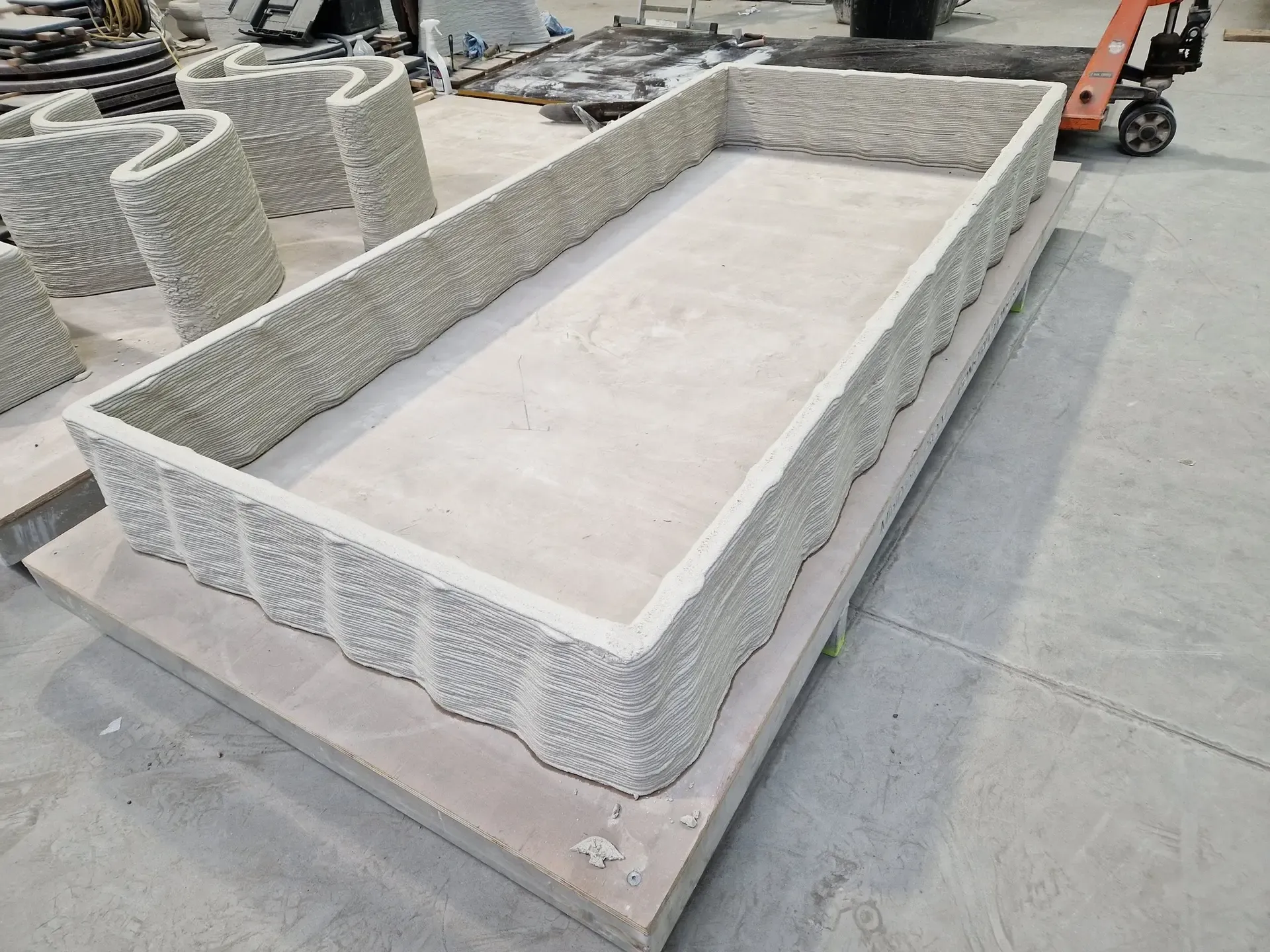
The material
The choice of material is crucial when creating interior design pieces. It must be versatile, offer precise control over thickness, and ensure an aesthetic finish—all key factors in crafting artistic objects.
The team carefully studied the options and chose Sika 751, a material better suited for this type of application, with a layer height of 10 mm—perfect for producing refined interior design elements.
An Installation Made Easy Thanks to a Responsive and Supportive Team
The commissioning of the MiniPrinter XL is fast and efficient. J. Semaille Créations experienced it firsthand, having handled the installation themselves, while the Constructions-3D team took care of the configuration.
A half-day training session accompanies the setup, covering assembly, disassembly, and maintenance of key components—particularly the pumping system. This approach allows clients to take ownership of their 3D concrete printer and explore its features directly. Hands-on practice helps them gain experience and progressively master the machine.
The after-sales service is equally effective. Through online communication platforms, clients receive immediate and personalized support. Jacques Semaille shares his experience:
“We discovered the machine step by step and communicated via WhatsApp. We gradually learned what could and couldn’t be done in terms of design, and whenever we had an issue, we simply sent a message to the group.”
There are many technical challenges before mastering such a machine:
“Getting the material right, understanding the machine—it wasn’t easy at first. It was really a learning experience, a matter of practice,” adds the entrepreneur.
In his workshop, environmental factors can directly affect the success of a print—such as high humidity or, conversely, excessive heat that causes the material to dry too quickly. Under these conditions, reproducing the same piece can be difficult, which is why the team is now considering new equipment to fully control production conditions.
The Constructions-3D teams are committed to continuously improving their machines through software updates, allowing companies like J. Semaille Créations to benefit from new features and stay informed of the latest innovations.
This is precisely why Jacques Semaille chose Constructions-3D: proximity and clear communication. For his interior design company, the long-term goal is clear — to become a showcase for 3D concrete printing, demonstrating to potential clients the impact and potential of this groundbreaking technology.
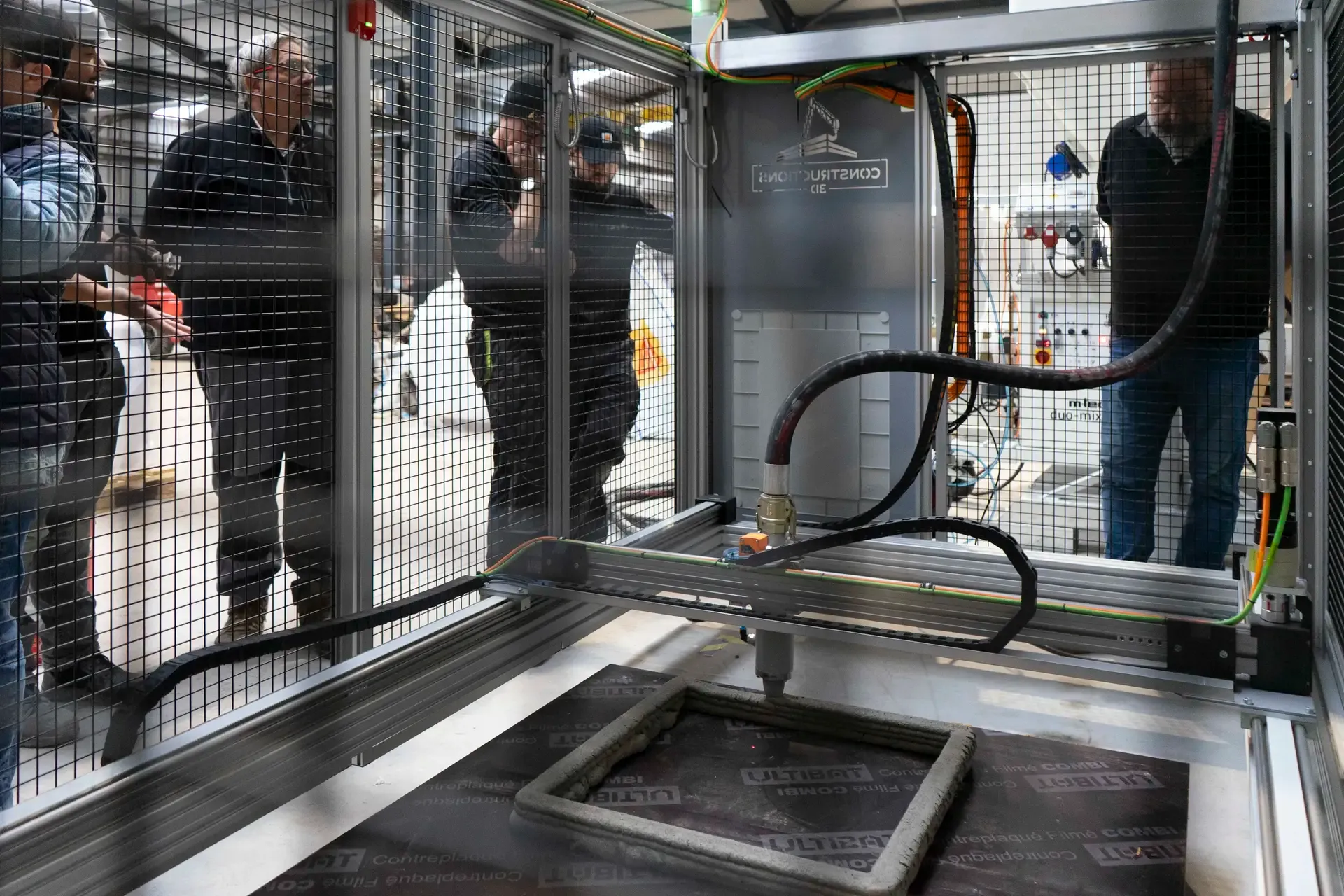
Projects and Creations: 3D Concrete Printing at the Service of Local Creativity
There are many steps before presenting a new creation. It begins with modeling, followed by prototyping, parameter setup in the 3D concrete printing software, printing, and finally finishing and post-processing, depending on the shapes, projects, and specific requests.
For this interior design company, each project involves adapting the final product through combinations of granite, wood, and color. And the ideas keep coming — Jacques Semaille is the perfect example of how inspiration fuels innovation. Planters, tables, vases, small basins — 3D printing has become a true source of creativity.
Last June in Avesnes-sur-Helpe, the company even used the MiniPrinter XL to build a wheelchair-accessible ramp in front of one of its funeral home agencies — the perfect way to test and get comfortable with the machine. After several months of design work, the project took shape in just two weeks, a real achievement for a team that had never tackled such a challenge before.
Jacques Semaille shares:
“We didn’t want the entrance to look like a typical ramp. It was something completely new for us and for the staff as well. We decided to keep it simple since it was our first project and we didn’t really know what to expect. Even for the assembly, they had never done anything like this, so we wanted to make sure it wasn’t too complicated.”
A remarkable success for the company. And the founder’s creativity doesn’t stop there — he’s now envisioning the design of stylish 3D-printed interior wall dividers made of concrete.
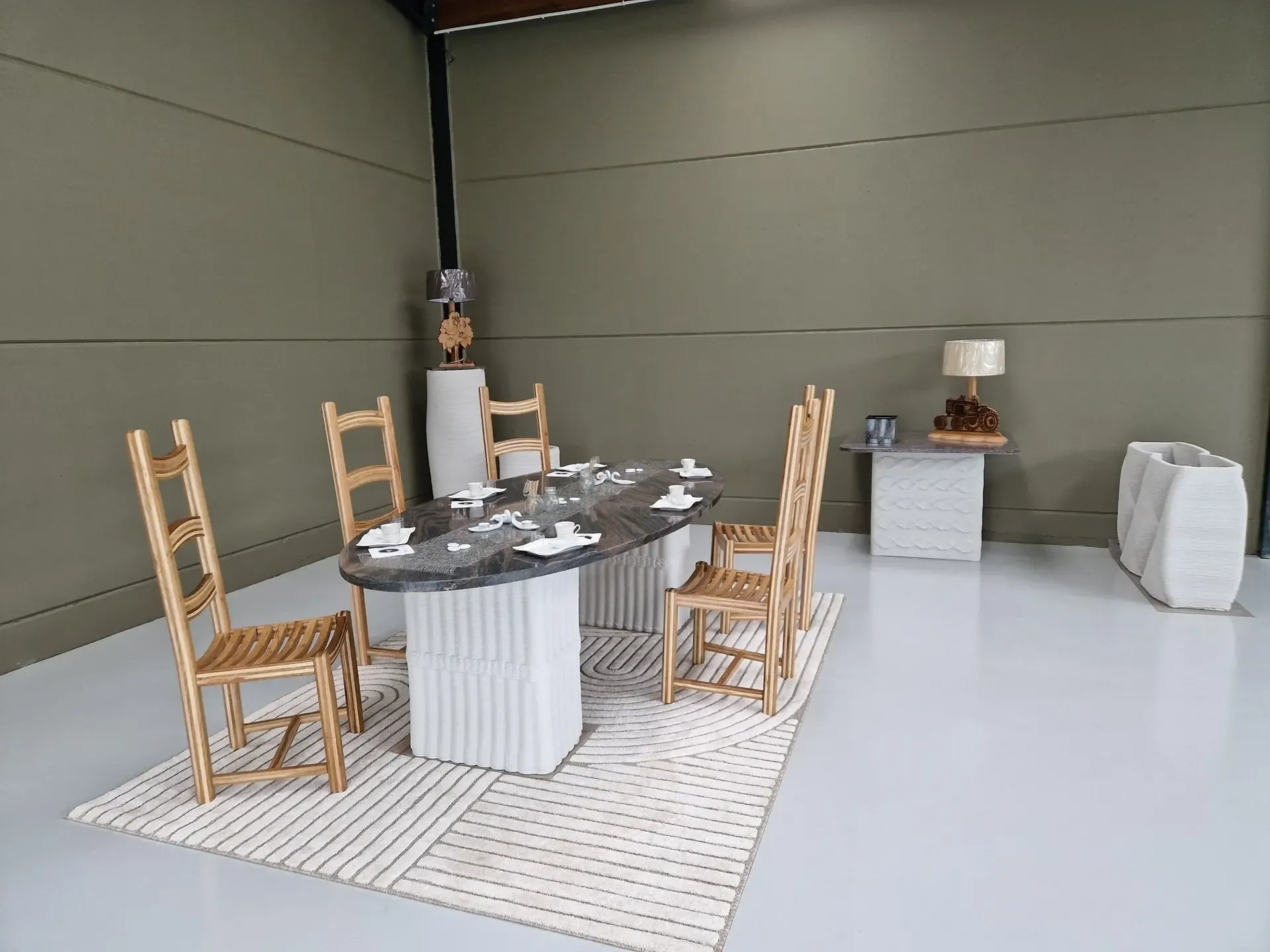
And what about the future?
Today, the priority is no longer just production — it’s recruiting passionate and skilled individuals.
3D printing and digital tools make it easier to train new employees, even without prior experience. Once they’re comfortable with basic software, they can quickly learn to use the programs and start producing parts. In an industry like stone masonry, where there’s a shortage of skilled labor, this represents a real opportunity.
For J. Semaille Création, the short- and mid-term goal is to further develop their decorative design activity. But inspiration is abundant, and projects keep coming. Next year, the team plans to print its first building. They are already experimenting with prefabricated indoor components, and plan to construct a structure with 3D-printed interior walls to replace traditional plasterboard. They also aim to integrate glass into their creations and offer a more personalized experience by coloring their printed pieces using Termix-3D materials—a new solution provided by Constructions-3D.
Above all, 3D concrete printing sparks curiosity. As a true marketing asset, the general public is often amazed when witnessing the process in action. People are fascinated by what can be achieved. On social media, each new post featuring a printed piece draws higher engagement and views, as shared by Emmanuelle Cossiaux, a team member at J. Semaille.
Still, the company is working to find its core audience. Convinced of the long-term impact of this technology, the founder remains open to potential collaborations with interior architects, helping them bring their ideas to life:
“I believe that at some point, there will be a shift — those who want to work with 3D printing will have to collaborate with architects or industry professionals.”
Whether it’s working with wood, granite, or 3D concrete printing, digital technology offers true creative freedom.
3D concrete printing is emerging as a key tool for the future of craftsmanship, blending traditional expertise with innovative methods.
Jacques Semaille proves that it is indeed possible to create differently.
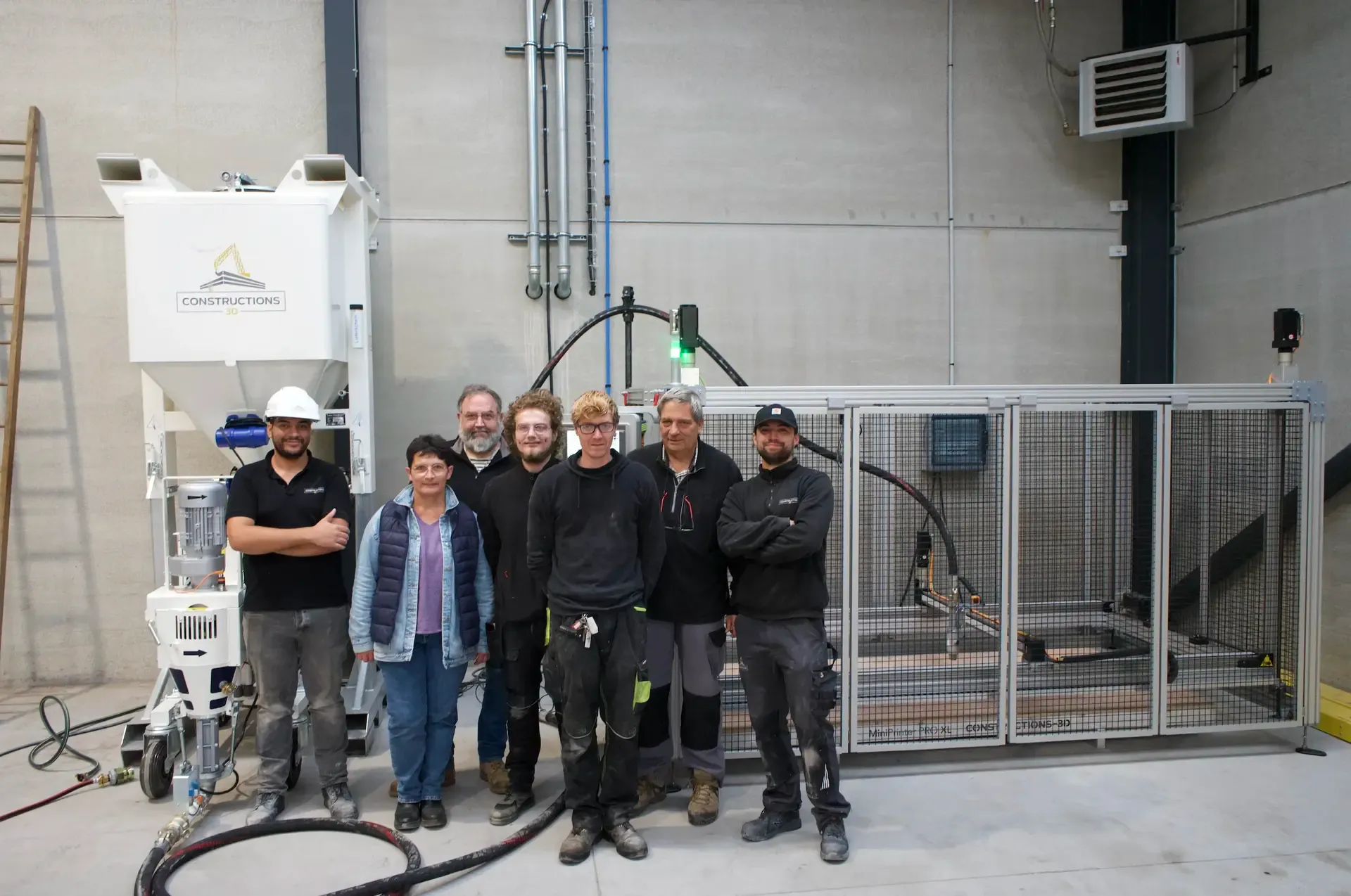
Ask your questions about concrete printing and our products...








